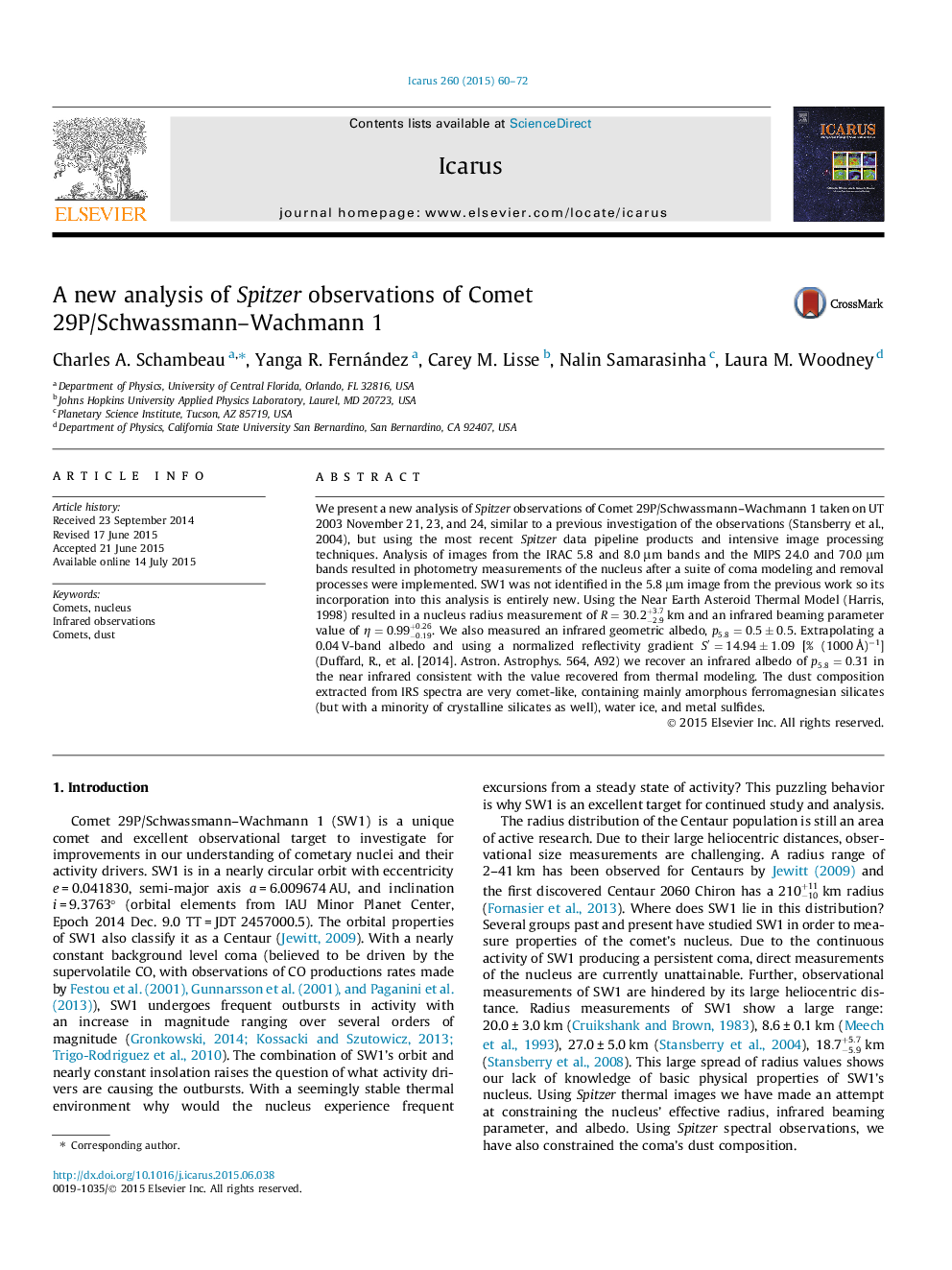| Article ID | Journal | Published Year | Pages | File Type |
|---|---|---|---|---|
| 8135974 | Icarus | 2015 | 13 Pages |
Abstract
We present a new analysis of Spitzer observations of Comet 29P/Schwassmann-Wachmann 1 taken on UT 2003 November 21, 23, and 24, similar to a previous investigation of the observations (Stansberry et al., 2004), but using the most recent Spitzer data pipeline products and intensive image processing techniques. Analysis of images from the IRAC 5.8 and 8.0 μm bands and the MIPS 24.0 and 70.0 μm bands resulted in photometry measurements of the nucleus after a suite of coma modeling and removal processes were implemented. SW1 was not identified in the 5.8 μm image from the previous work so its incorporation into this analysis is entirely new. Using the Near Earth Asteroid Thermal Model (Harris, 1998) resulted in a nucleus radius measurement of R=30.2-2.9+3.7 km and an infrared beaming parameter value of η=0.99-0.19+0.26. We also measured an infrared geometric albedo, p5.8=0.5±0.5. Extrapolating a 0.04 V-band albedo and using a normalized reflectivity gradient Sâ²=14.94±1.09 [% (1000 Ã
)â1] (Duffard, R., et al. [2014]. Astron. Astrophys. 564, A92) we recover an infrared albedo of p5.8=0.31 in the near infrared consistent with the value recovered from thermal modeling. The dust composition extracted from IRS spectra are very comet-like, containing mainly amorphous ferromagnesian silicates (but with a minority of crystalline silicates as well), water ice, and metal sulfides.
Related Topics
Physical Sciences and Engineering
Earth and Planetary Sciences
Space and Planetary Science
Authors
Charles A. Schambeau, Yanga R. Fernández, Carey M. Lisse, Nalin Samarasinha, Laura M. Woodney,
